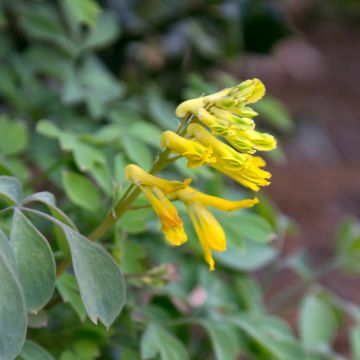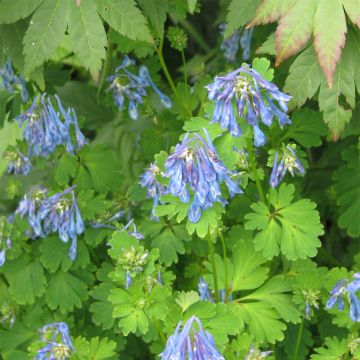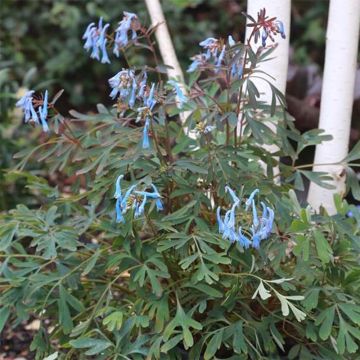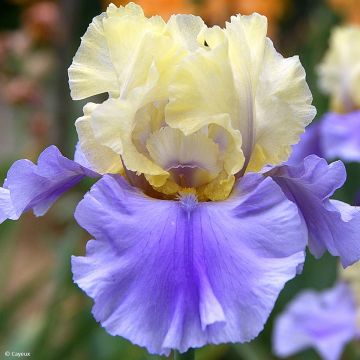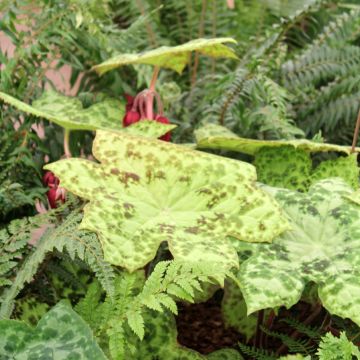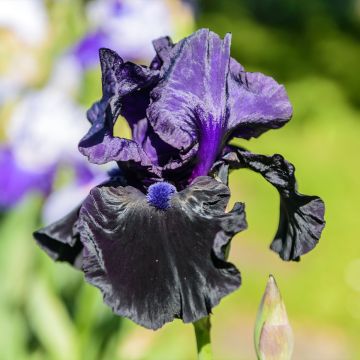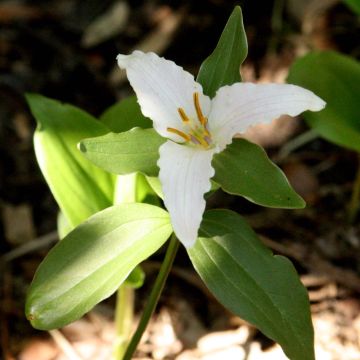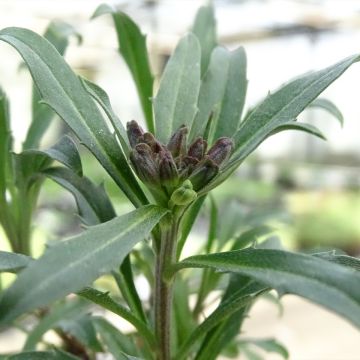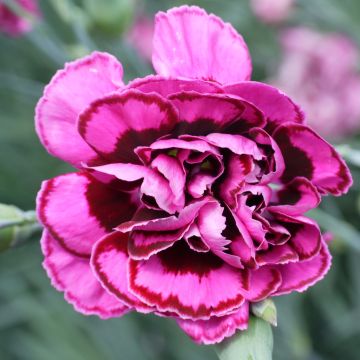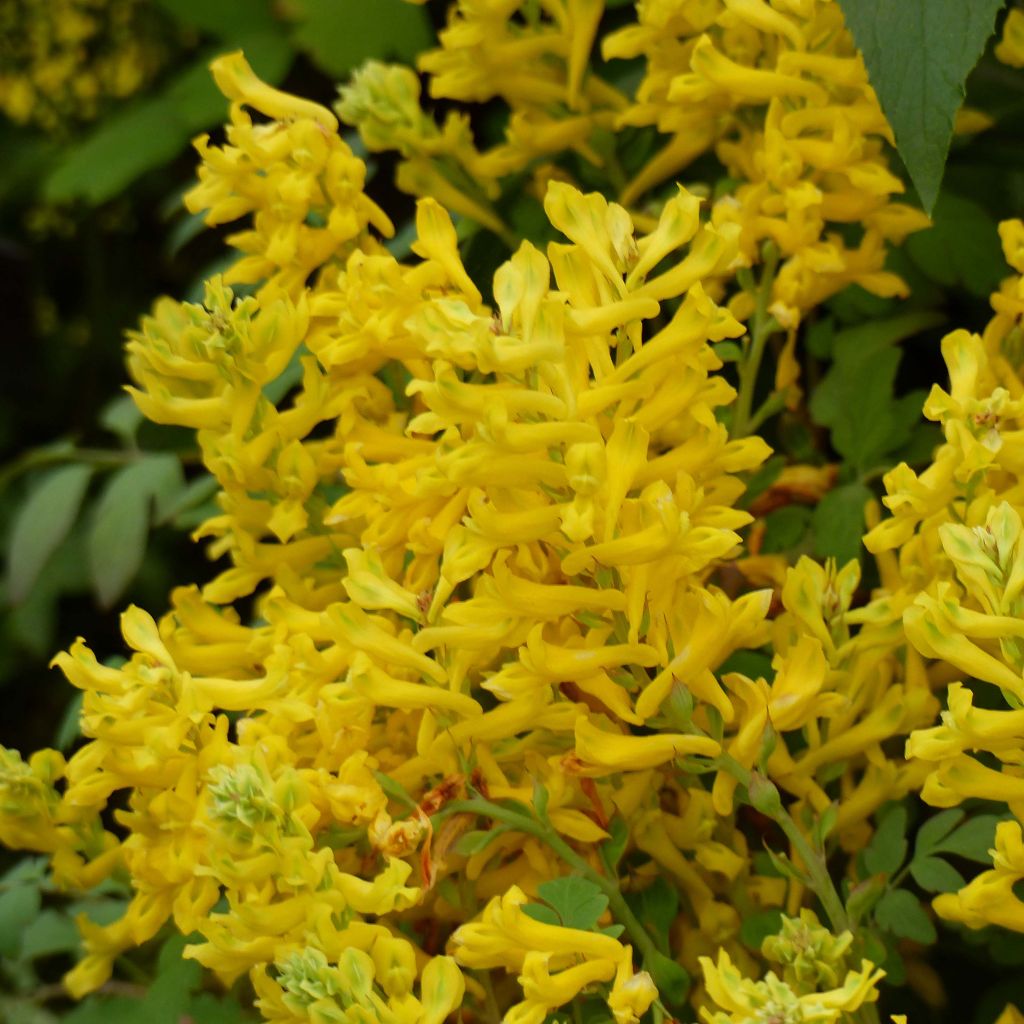

Corydalis Canary Feathers - Hybrid Corydalis
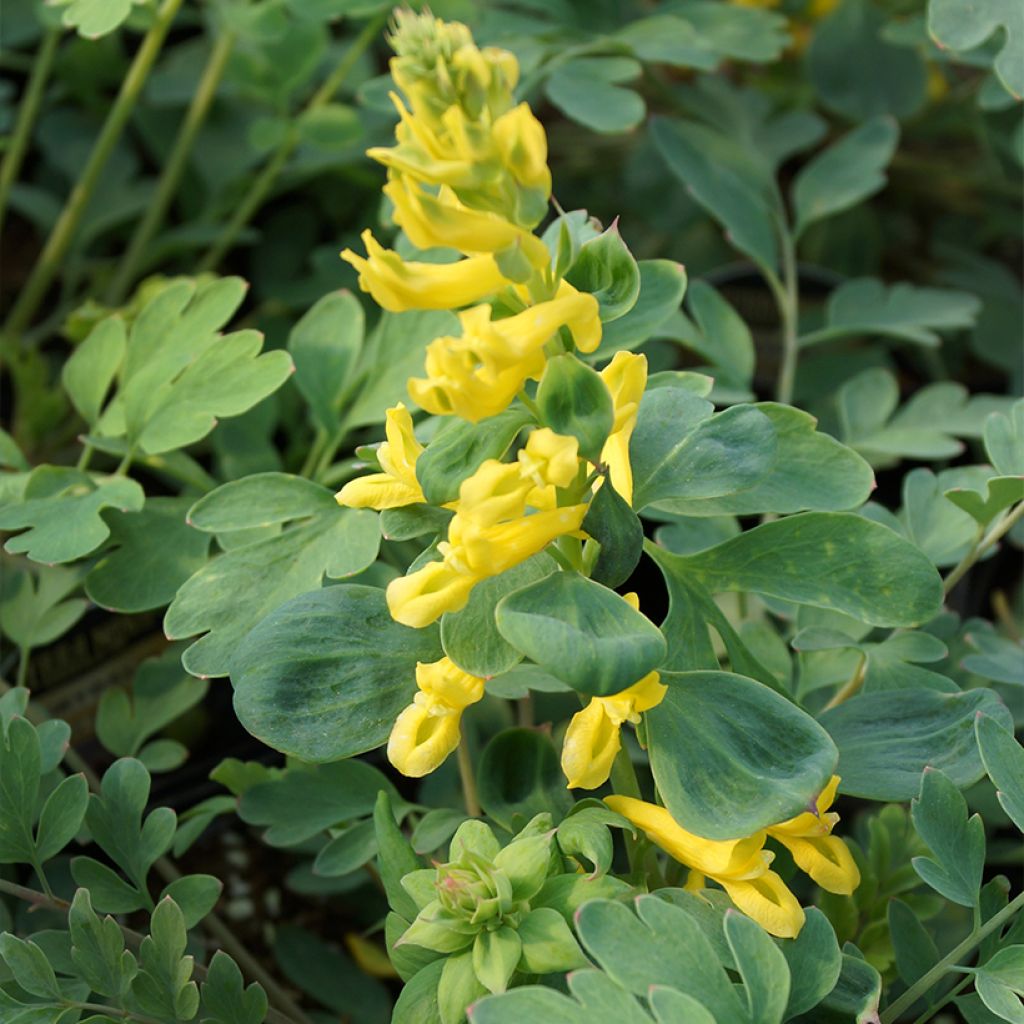

Corydalis Canary Feathers - Hybrid Corydalis
Corydalis Canary Feathers - Hybrid Corydalis
Corydalis Canary Feathers
Fumewort
Arrivé dans un état déplorable, despite careful packaging, few roots, planted nonetheless, waiting for spring to see if it will recover, rather pessimistic.
alain, 11/10/2022
This item cannot be shipped to the selected country
Delivery charge from €5.90
More information
Delivery charge from €5.90
More information
Schedule delivery date,
and select date in basket
This plant carries a 12 months recovery warranty
More information
We guarantee the quality of our plants for a full growing cycle, and will replace at our expense any plant that fails to recover under normal climatic and planting conditions.
From €5.90 for pickup delivery and €6.90 for home delivery
Express home delivery from €8.90.
Does this plant fit my garden?
Set up your Plantfit profile →
Description
The Corydalis 'Canary Feathers' is an exceptional hybrid, born from the marriage of two beautiful perennial plants from the undergrowth of China. One can only admire this bright plant, its long flowering in generous bright yellow clusters or its dentate fern-like foliage with a truly bluish-grey shade. In addition to these aesthetic qualities, it can be easily grown and has numerous uses in cool soil, from ground cover to hanging baskets, to covering shaded walls.
The hybrid Corydalis 'Canary Feathers', introduced by Terra Nova Nurseries in the United States in 2008, belongs to the family Fumariaceae. It is a hybrid obtained by cross-breeding Corydalis moorcroftiana and C. wilsonii. The former grows in the Himalayas and Kashmir, at altitudes of 4000 to 5400 m (13123 to 17716ft), and the latter in central China. They are both hardy perennial plants from the understory, with yellow flowering and bluish foliage.
The rather slow growth of this corydalis will allow it to occupy 30-40 cm (12-16in) in width, with a height of 30 cm (12in). It forms a compact and dense tuft, which slowly spreads as a ground cover thanks to its stolons. The foliage, which disappears in winter, takes on a very refined shade of bluish-green with a hint of powder. Finely serrated, it resembles that of bleeding hearts, fumitories, ferns, or chervil. The flowering is surprisingly long if the soil remains cool throughout the summer. It starts in May and continues until the end of summer in cool climates. Under hotter climates, the plant tends to go dormant in summer and re-blooms in autumn. The flowers, similar to small yellow tubes about 2 mm (1in) long, have a long spur. They are gathered in slightly loose flower heads above the foliage. This sterile variety does not produce seeds.
The 'Canary Feathers' Corydalis is primarily a shade or semi-shade plant that will express its full potential in the understory. It can be paired with other perennials that do not fear competition from tree or bush roots. Accompany it with the cousin of Solomon's Seal (Uvularia grandiflora), hardy fuchsias, creeping bugleweed, Balkan digitalis, Tricyrtis, painted fern, or Ivory Heart bleeding heart. This plant also performs very well in pots and creates a beautiful effect in hanging baskets from which it cascades down. Plant this corydalis above walls, on the north side, or in shady rock gardens where the soil never completely dries out.
Corydalis Canary Feathers - Hybrid Corydalis in pictures
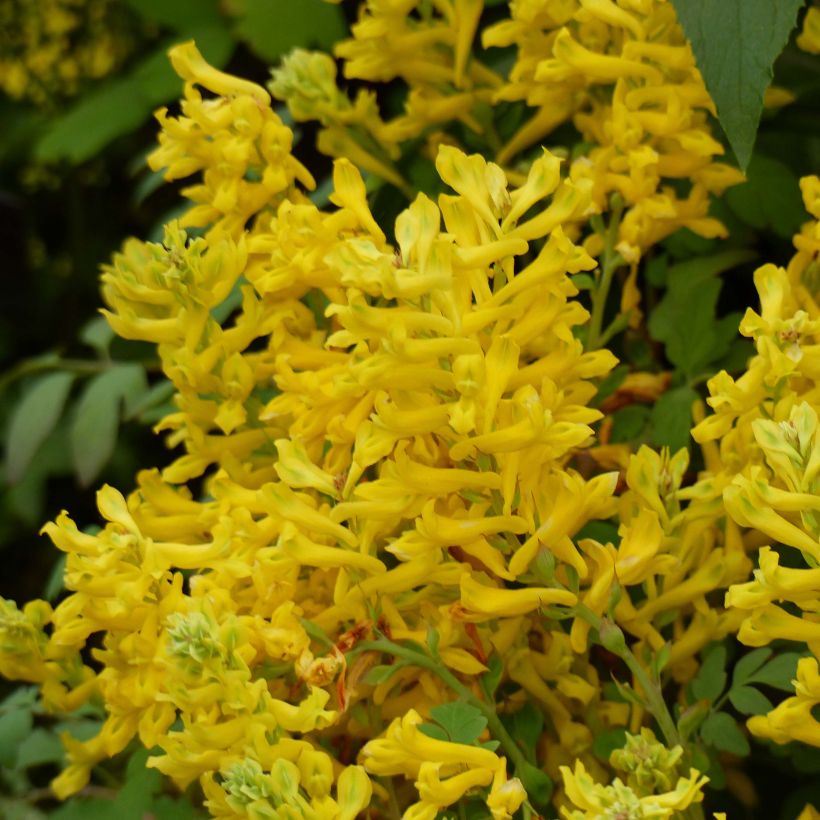

Flowering
Foliage
Plant habit
Botanical data
Corydalis
Canary Feathers
Fumariaceae - Papaveraceae
Fumewort
Cultivar or hybrid
Other Corydalis
Planting and care
Plant the 'Canary Feathers' hybrid Corydalis in deep, light and humus-rich soil, always moist, neutral to acidic, or even slightly chalky. It will thrive in shade or a partially shaded position in the morning sun, under trees or bushes with which it does not compete. Prune the plant in spring to remove dead foliage.
Planting period
Intended location
Care
-
, onOrder confirmed
Reply from on Promesse de fleurs
Spring flowering perennials
Haven't found what you were looking for?
Hardiness is the lowest winter temperature a plant can endure without suffering serious damage or even dying. However, hardiness is affected by location (a sheltered area, such as a patio), protection (winter cover) and soil type (hardiness is improved by well-drained soil).

Photo Sharing Terms & Conditions
In order to encourage gardeners to interact and share their experiences, Promesse de fleurs offers various media enabling content to be uploaded onto its Site - in particular via the ‘Photo sharing’ module.
The User agrees to refrain from:
- Posting any content that is illegal, prejudicial, insulting, racist, inciteful to hatred, revisionist, contrary to public decency, that infringes on privacy or on the privacy rights of third parties, in particular the publicity rights of persons and goods, intellectual property rights, or the right to privacy.
- Submitting content on behalf of a third party;
- Impersonate the identity of a third party and/or publish any personal information about a third party;
In general, the User undertakes to refrain from any unethical behaviour.
All Content (in particular text, comments, files, images, photos, videos, creative works, etc.), which may be subject to property or intellectual property rights, image or other private rights, shall remain the property of the User, subject to the limited rights granted by the terms of the licence granted by Promesse de fleurs as stated below. Users are at liberty to publish or not to publish such Content on the Site, notably via the ‘Photo Sharing’ facility, and accept that this Content shall be made public and freely accessible, notably on the Internet.
Users further acknowledge, undertake to have ,and guarantee that they hold all necessary rights and permissions to publish such material on the Site, in particular with regard to the legislation in force pertaining to any privacy, property, intellectual property, image, or contractual rights, or rights of any other nature. By publishing such Content on the Site, Users acknowledge accepting full liability as publishers of the Content within the meaning of the law, and grant Promesse de fleurs, free of charge, an inclusive, worldwide licence for the said Content for the entire duration of its publication, including all reproduction, representation, up/downloading, displaying, performing, transmission, and storage rights.
Users also grant permission for their name to be linked to the Content and accept that this link may not always be made available.
By engaging in posting material, Users consent to their Content becoming automatically accessible on the Internet, in particular on other sites and/or blogs and/or web pages of the Promesse de fleurs site, including in particular social pages and the Promesse de fleurs catalogue.
Users may secure the removal of entrusted content free of charge by issuing a simple request via our contact form.

































